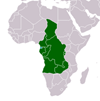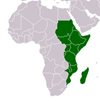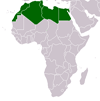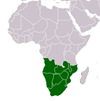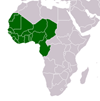Monitoring Global Poverty
Monitoring Global Poverty
Reports that, consistent with the 2018 Poverty and Shared Prosperity report, global poverty reduction has slowed, making it increasingly difficult to reach the global goal of reducing extreme poverty to 3 percent by 2030. The COVID-19 pandemic will likely push about 100 million more people into extreme poverty. Other factors have also contributed to this reversal. In the Middle East and North Africa, extreme poverty has risen as a result of sustained violent conflict. In Sub-Saharan Africa, some economies have progressed, but high rates of extreme poverty remain persistent, with high levels of multidimensional poverty and considerable overlaps across the different dimensions, suggesting nonmonetary deprivations only compound monetary poverty. Poverty reduction has also slowed when assessed at the US$3.20-a-day and US$5.50-a-day lines, but at rates lower in Sub-Saharan Africa and South Asia than at the extreme poverty line (US$1.90), implying that many people have barely escaped extreme poverty and remain at risk of falling back.This edition of the biennial Poverty and Shared Prosperity report brings sobering news. The COVID-19 (coronavirus) pandemic and its associated economic crisis, compounded by the effects of armed conflict and climate change, are reversing hard-won gains in poverty reduction and shared prosperity. The fight to end poverty has suffered its worst setback in decades after more than 20 years of progress. The goal of ending extreme poverty by 2030, already at risk before the pandemic, is now beyond reach in the absence of swift, significant, and sustained action, and the objective of advancing shared prosperity—raising the incomes of the poorest 40 percent in each country—will be much more difficult.Poverty and Shared Prosperity 2020: Reversals of Fortune presents new estimates of COVID-19’s impacts on global poverty and shared prosperity. Harnessing fresh data from frontline surveys and economic simulations, it shows that pandemic-related job losses and deprivation worldwide are hitting already poor and vulnerable people hard, while also shifting the profile of global poverty to include millions of ‘new poor.’ Original analysis included in the report shows that the new poor are more urban, better educated, and less likely to work in agriculture than those living in extreme poverty before COVID-19. It also gives new estimates of the impact of conflict and climate change, and how they overlap. These results are important for targeting policies to safeguard lives and livelihoods. It shows how some countries are acting to reverse the crisis, protect those most vulnerable, and promote a resilient recovery.These findings call for urgent action. If the global response fails the world’s poorest and most vulnerable people now, the losses they have experienced to date will be minimal compared with what lies ahead. Success over the long term will require much more than stopping COVID-19. As efforts to curb the disease and its economic fallout intensify, the interrupted development agenda in low- and middle-income countries must be put back on track. Recovering from today’s reversals of fortune requires tackling the economic crisis unleashed by COVID-19 with a commitment proportional to the crisis itself. In doing so, countries can also plant the seeds for dealing with the long-term development challenges of promoting inclusive growth, capital accumulation, and risk prevention—particularly the risks of conflict and climate change.
CITATION: World Bank. Monitoring Global Poverty . Washington, D. C. : World Bank Group , 2020. - Available at: https://library.au.int/monitoring-global-poverty-0

